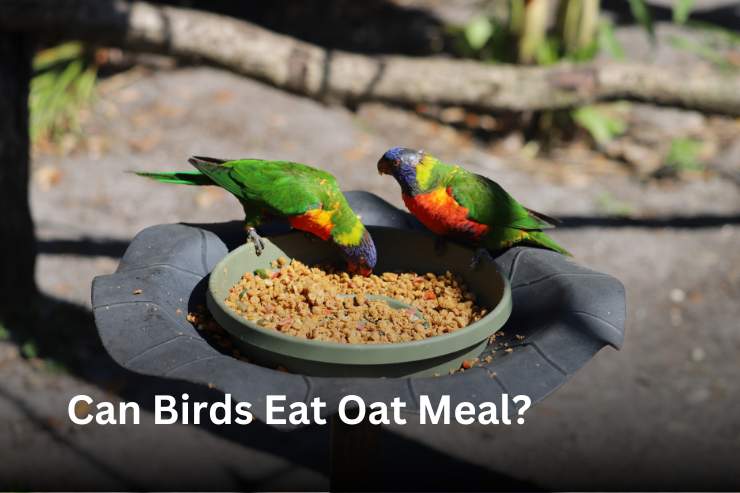15 Small Birds of Michigan (With Pictures)
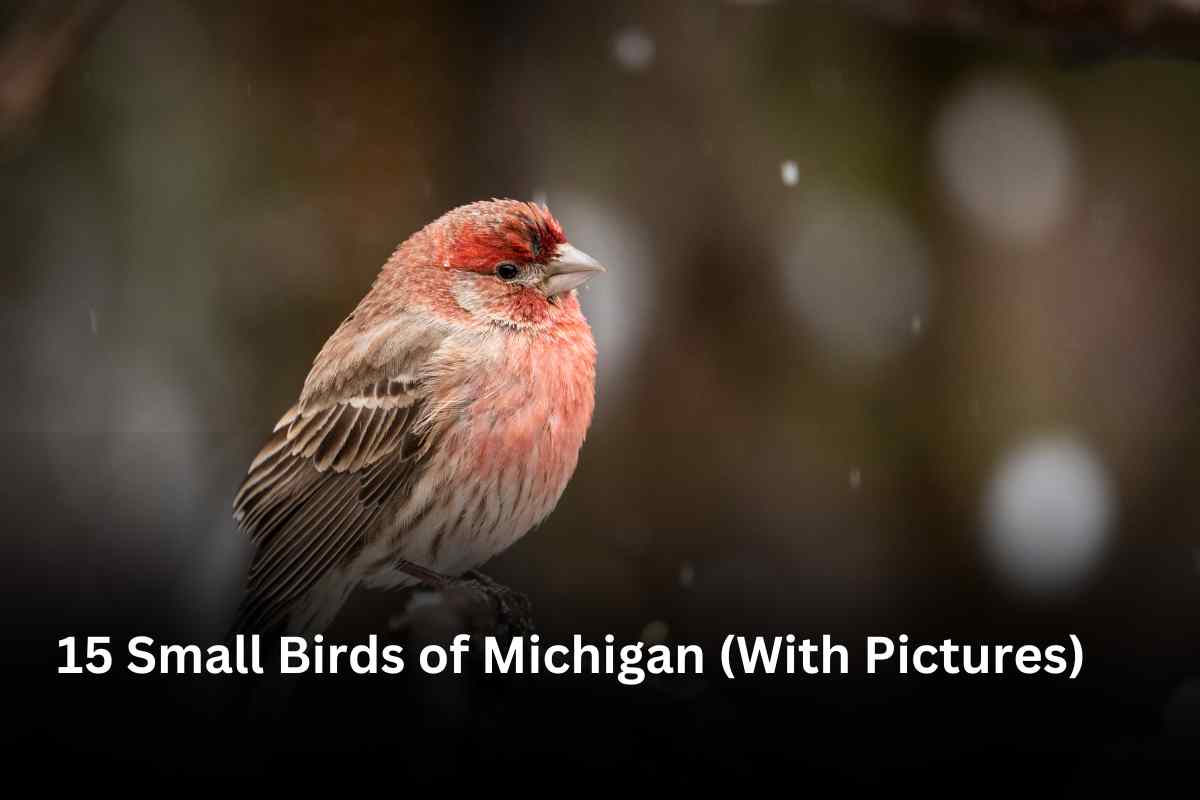
Michigan is a stunningly diversified state with a wide range of habitats and ecosystems, making it home to a plethora of rare and magnificent bird species.
Birds of different forms, sizes, and colors can be found in the Great Lakes region, from tiny songbirds to massive vultures.
A closer study indicates that 15 of these bird species are among Michigan’s most prevalent backyard bird species. Whether you’re a novice or a seasoned birder, you’ve probably seen some of these species buzzing around.
In this blog post, we’ll look at 15 of the most frequent small birds found of Michigan backyards like yours.
15 Small Birds of Michigan List
- American Goldfinch
- Black-capped Chickadee
- Carolina Wren
- Dark-eyed Junco
- Downy Woodpecker
- Eastern Bluebird
- House Finch
- House Sparrow
- Northern Cardinal
- Red-winged Blackbird
- Ruby-throated Hummingbird
- Song Sparrow
- Tree Swallow
- White-breasted Nuthatch
- Yellow Warbler
American Goldfinch

Where in Michigan does it find?
The American Goldfinch can be found throughout Michigan, from the southern part of the state to the Upper Peninsula.
Short Description of the bird?
The American Goldfinch is a small bird with bright yellow feathers and black wings. During winter, its feathers fade to a duller olive-brown color.
Where to find this bird?
You can spot these beautiful birds in open fields, meadows, and gardens that have plentiful food sources like thistle seeds and sunflower heads.
Size of the bird, wingspan, weight
This tiny bird measures about 4-5 inches long. It has a wingspan of approximately 7-8 inches and weighs around 0.4 ounces.
Diet
Its diet mainly consists of seeds like those from plants such as dandelions, sunflowers, zinnias, cosmos flowers, or coneflowers.
How to identify
Look for their vibrant yellow plumage during summer or their pale grayish-brown feathers during winter. They also have distinctive short beaks adapted for eating seeds.
Black-capped Chickadee
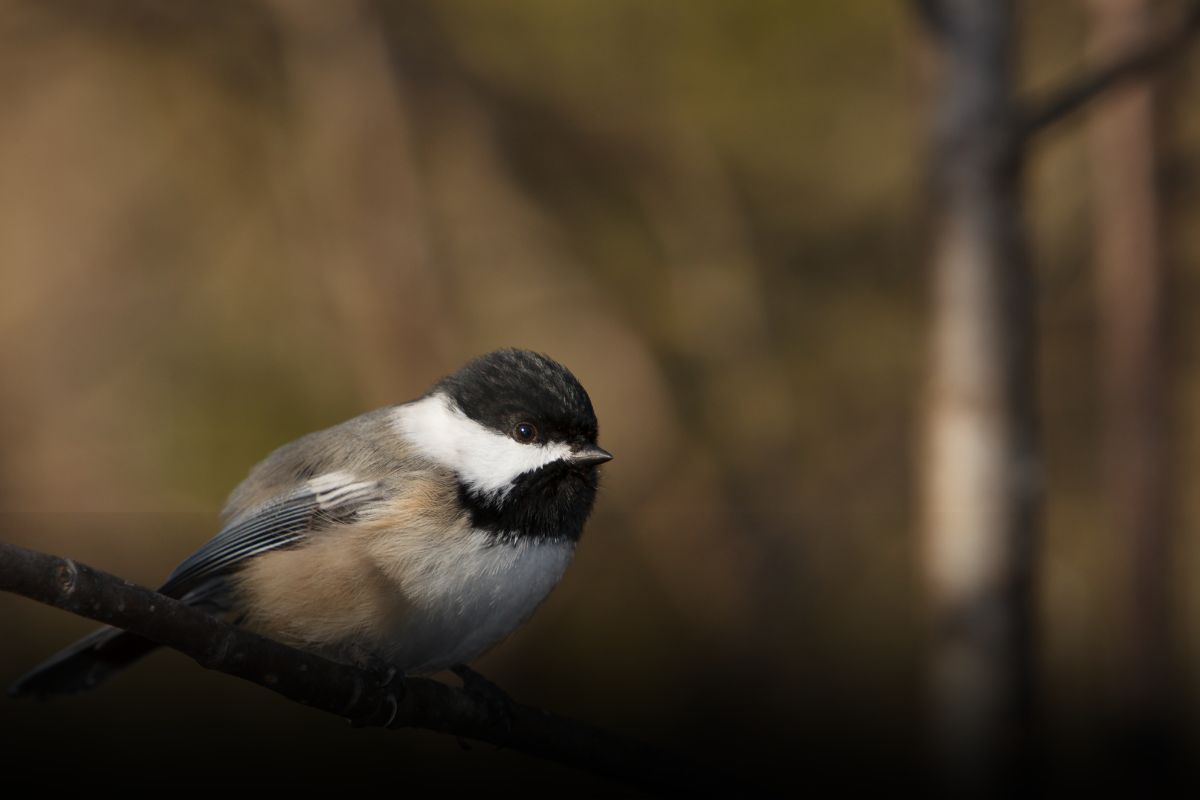
Where in Michigan does it find?
Black-capped Chickadees are common throughout all parts of Michigan as year-round residents.
Short Description
With its black cap on top and white cheeks contrasting against grayish-blue wings and the body below – it’s easy enough just looking at one up close! Their call “Chick-a-dee-dee-dee” is memorable too.
Where should we look for them?
These birds make themselves known amongst shrubs and trees near rivers or forests all across our state. So keep your eyes open you’re out walking next time–you might get lucky spotting one nearby.
Size/ Wingspan/ Weight
On average Chickadees grow to be just 4.5-5 inches with a wingspan of about 6-8 inches and a weight around only .32-.49 ounces so they are quite tiny indeed.
Diet
The Black-capped Chickadee enjoys feasting on insects, seeds, berries, and sometimes even suet or peanut butter offered at bird feeders.
How to identify?
Keep an eye out for their distinctive black cap on top of the head contrasting against white cheeks; their overall grayish-blue wings/bodies below help them stand out.
Carolina Wren
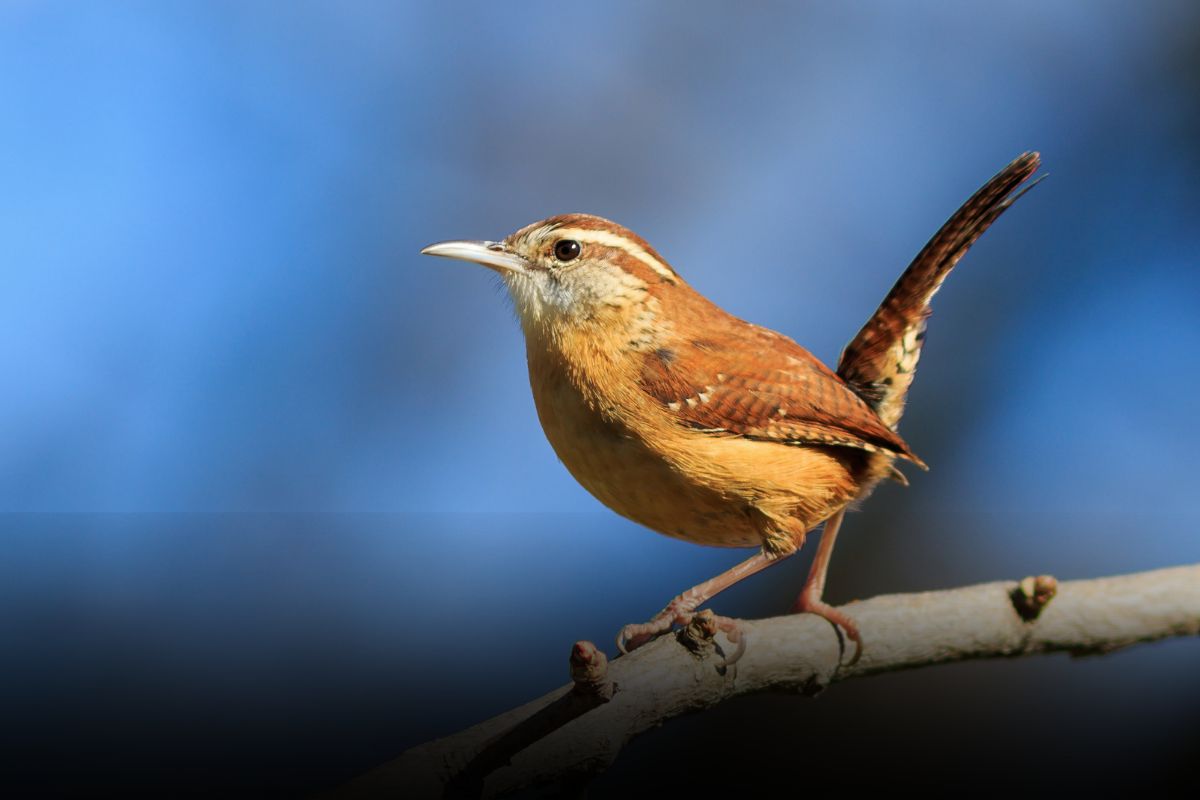
Where in Michigan does it find?
You can find these small birds located in the lower half of Michigan as they prefer warmer climates during winter months.
Short Description
Identify this little creature by its reddish-brown back with fine black spots and its long thin bill that points slightly downwards.
Where should we look for them?
Look up high into trees or shrubs in forested areas near open spaces like parks or gardens where you might spot one perched elegantly.
Size/ Wingspan/ Weight
Measuring at approximately 4.72–5.51 inches when fully grown. They do have a wingspan of around 29 cm (11 in) wingspan and weight if weight of about 18 to 23 g (0.63 to 0.81 oz).
Diet
This insectivorous species mainly feeds on spiders, caterpillars, and other small bugs.
How To Identify It?
These are little brown birds with short tails and a narrow bill. They also have a dark barring on their wings and tail, as well as a pale throat.
Dark-eyed Junco
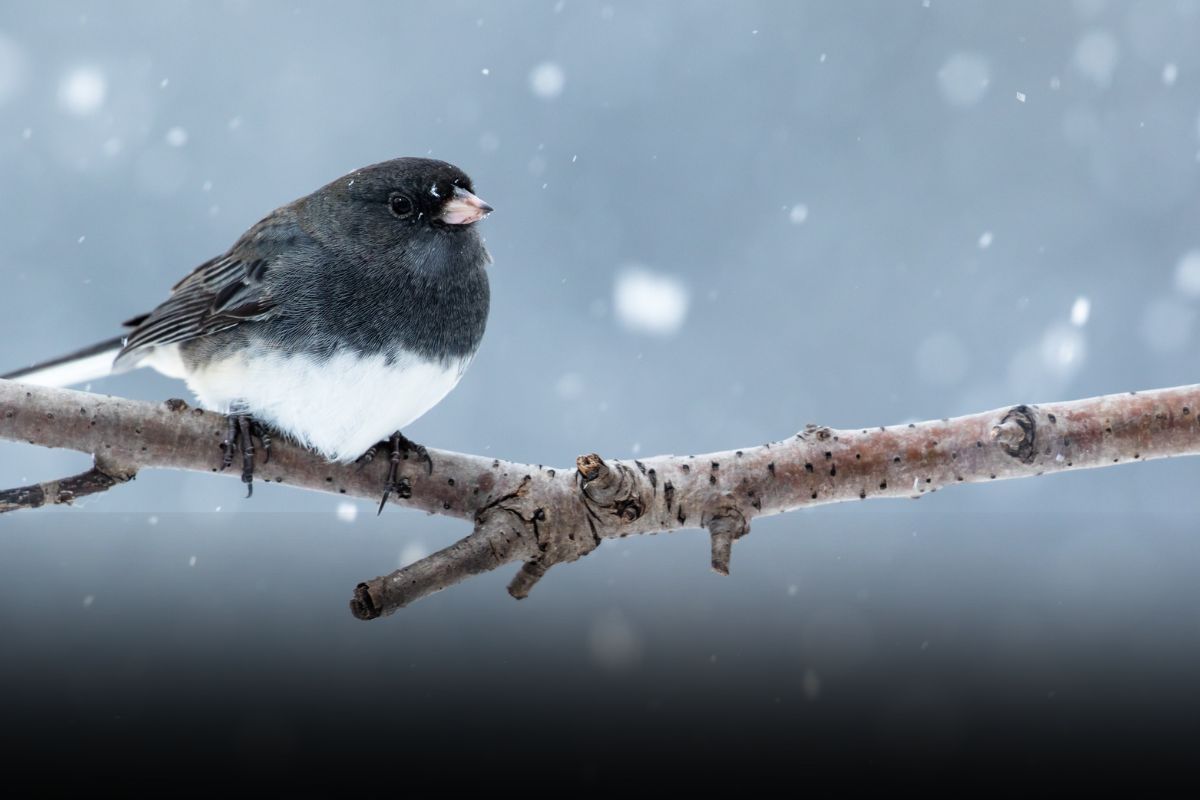
Where in Michigan does it find?
The Dark-eyed Junco can be found all across Michigan, including forests, fields, and even suburban areas.
Short Description of the bird
The Dark-eyed Junco is a small sparrow-like bird with a gray body and a white belly. It has distinctive dark eyes and pinkish bills.
Where to find this bird?
Look for these birds near wooded areas, particularly where there are shrubs or brush piles for them to hop around in search of seeds on the ground.
Size of the bird, wingspan, weight
These birds measure about 5-6 inches long with a wingspan of approximately 7-9 inches. They weigh around 0.74 ounces.
Diet
Their diet mainly consists of seeds from plants like grasses or weeds. However, they also eat insects during breeding season.
How to identify?
Look for their gray body coloration that contrasts with their white bellies. Also, take note of their dark eyes that stand out against their pale-colored feathers.
Downy Woodpecker

Where in Michigan does it find?
Downy Woodpeckers can be spotted throughout Michigan as year-round residents.
Short Description
With its black wings adorned by striking white spots along with contrasting black caps at the top, while not as boldly patterned compared to larger woodpeckers।
Where should we look for them?
You can find Downy Woodpeckers hanging off branches or tapping away at tree trunks–keep your ears open too as sound drumming made pecking the woods.
Size/ Wingspan/ Weight
Downy Woodpeckers have a body length of 6 to 7 inches (14-17 cm) and a wingspan of 10 to 12 inches (25-30 cm). Adult birds weigh 0.74 to 1 ounce (21-28 g).
Diet
Downy Woodpeckers love a mix of insects such as beetles, and ants along with seeds offered in feeders or from trees.
How to identify?
Look for its small size and check for the black wings adorned by white spots. The males have a distinctive black cap on top that sets them apart from the females.
Eastern Bluebird

Where in Michigan does it find?
These beautiful birds can be seen throughout open spaces like meadows, parks, and golf courses across the lower half of Michigan – making their presence known through melodic song.
Short Description
Eastern Bluebird has a vibrant blue back paired up with rusty-orange breast coloring patterns; females sport less intense colors overall but are still lovely themselves too.
Where should we look for them?
Set out your sights upon fence posts and open areas where they perch nearby before swooping down onto the ground and devouring any available food sources therein.
Size/ Wingspan/ Weight
Eastern bluebirds are 16-21 cm (6.3-8.3 in) long, have a wingspan of 25-32 cm (9.8-12.6 in), and weigh 27-34 g (0.95-1.20 oz).
Diet
Their diet consists largely of insects such as grasshoppers worms caterpillars spiders berries offered many berry-producing plants, especially during winter months these delightful creatures may also pluck fruits found in nature to provide additional nutrition passage icy path-passages.
How to identify?
Look out for their brilliant blue backs and rusty-orange breasts (males) or paler coloration (females). Their perched behavior on fences is also characteristic.
House Finch

Where in Michigan does it find?
House Finches are commonly found throughout Michigan, especially around residential areas and gardens.
Short Description of the bird
The House Finch is a small bird with brownish feathers, streaked underparts, and a reddish color on its head and breast. Males have brighter red coloring.
Where to find this bird?
Look for them in shrubs, trees, or on feeders where they can eat seeds like sunflower seeds or thistle seeds.
Size of the bird, wingspan, weight
These birds measure about 5-6 inches long with a wingspan of approximately 8-9 inches. They weigh around 0.7 ounces.
Diet
The diet of House Finches consists mainly of seeds from various plants such as grasses, weeds, or fruits from trees. They also eat insects during the breeding season.
How to identify?
Look for their overall brown coloration with streaks on the underparts. Males have reddish coloring on their heads and breasts.
House Sparrow

Where in Michigan does it find?
You’ll come across these common birds all across our beautiful state – whether you’re walking through city streets suburban neighborhoods rural areas farms playgrounds schoolyards commercial buildings open spaces.
Short Description
These little birds have olive-brown colored bodies along with black patches below the bill contrasting against white cheeks making them appear browner.
Where should we look for them?
Their nests are located primarily among dense vegetation, particularly near nesting cavities and man-made structures.
Size/ Wingspan/ Weight
Sparrows are typically 16 cm (6.3 in) long. Furthermore, the wingspan ranges from 19 to 25 centimeters (7.5 to 9.8 in). The house sparrow weighs between 24 and 39.5 g (0.85 and 1.39 oz). Females are often slightly smaller than males.
Diet
House sparrows deftly adapt varied diets including insects various grains small fruits seeds any tidbits.
How to Identify It?
Their small build and nondescript olive-brown coloration make them easily recognizable. Look for the black patch below their bill and white cheeks.
Northern Cardinal

Where in Michigan does it find?
You can spot Northern Cardinals all across Michigan, from urban areas to rural forests.
Short Description of the bird?
The Northern Cardinal is a small bird with bright red plumage and a distinctive crest on its head. Females have muted brown coloring.
Where to find this bird?
Look for them in dense shrubs, woodlands, parks, or even your backyard where they can be found perched high up singing their beautiful songs.
Size of the bird, wingspan, weight
These birds measure about 8-9 inches long with a wingspan of approximately 10-12 inches. They weigh around 1.5-1.7 ounces.
Diet
The diet of Northern Cardinals consists mainly of seeds but also includes insects like beetles and grasshoppers during breeding season.
How to identify?
Look for their stunning red plumage (males) or reddish-brown feathers (females). Their crest on top of their heads is also indicative of this species.
Red-winged Blackbird
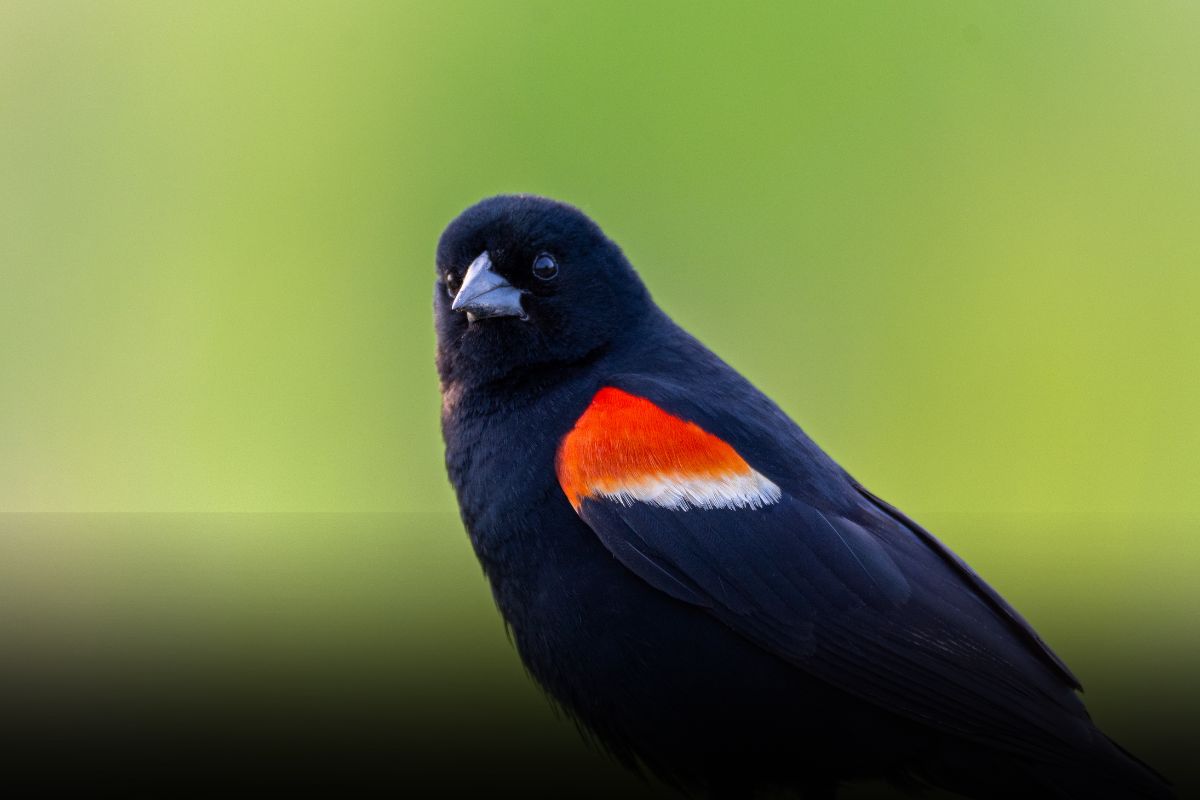
Where in Michigan does it find?
Red-winged Blackbirds are widespread throughout Michigan, particularly in wetland areas such as marshes and lakeshores.
Short Description of the bird
The male Red-winged Blackbird is black with red and yellow shoulder patches. The female has a streaky brown appearance.
Where to find this bird?
Look for them near water sources like marshes, ponds, or along the edges of fields where they can perch on tall grasses or cattails.
Size of the bird, wingspan, weight
These birds measure about 7-9 inches long with a wingspan of approximately 12-15 inches. They weigh around 1.5-2 ounces.
Diet
Their diet includes insects like beetles and grasshoppers during breeding season, as well as seeds from plants like sunflowers and corn later in the year.
How to identify?
Look for their black coloration with bright red and yellow shoulder patches (males). Females have a streaky brown plumage.
Ruby-throated Hummingbird

Where in Michigan does it find?
Ruby-throated Hummingbirds can be found all across Michigan during summer months when they migrate northward.
Short Description
The Ruby-throated Hummingbird is small with iridescent green feathers reflecting different colors depending on light conditions. Males have a vibrant ruby throat patch while females’ throats are more white-colored.
Where should we look for them?
Ruby-throated Hummingbirds can be found in parks, gardens, and backyards, as well as open forests, forest borders, meadows, and grasslands.
Size / Wingspan / Weight
The ruby-throated hummingbird measures 3-4 inches long and has a wingspan of 3-4 inches. It is only 3-4 grams in weight.
Diet
Ruby-throated Hummingbirds have voracious appetites for nectar, so they seek out the sweet nectar of flowers. They also catch small insects to supplement their diet with protein.
How to Identify It?
Their tiny size and iridescent green feathers are key identifiers. Look for the bright red or white throat patch depending on gender.
Song Sparrow

Where in Michigan does it find?
Song Sparrows are common throughout Michigan as they reside year-round.
Short Description
The Song Sparrow has brownish upperparts with streaks on its breast and sides.
Where should we look for them?
Search for these delightful sparrows near wetland areas, shrubs along streamsides open meadows brushy thickets – basically anywhere they can hide during daylight hours.
Size/ Wingspan/ Weight
When fully grown, Song Sparrows measure around 6-7 inches from head to tail. Furthermore, wingspan is 18 to 25.4 cm (7.1 to 10.0 in). They have weight of 11.9 to 53 g (0.42 to 1.87 oz).
Diet
These omnivorous birds enjoy a varied diet consisting of seeds insects spiders worms during the summer months though will make most themselves seed-offered feeders in colder months.
How to identify?
Look for their brownish upperparts with streaked breasts and sides. Their songs can also help distinguish them as they have a melodious.
Tree Swallow
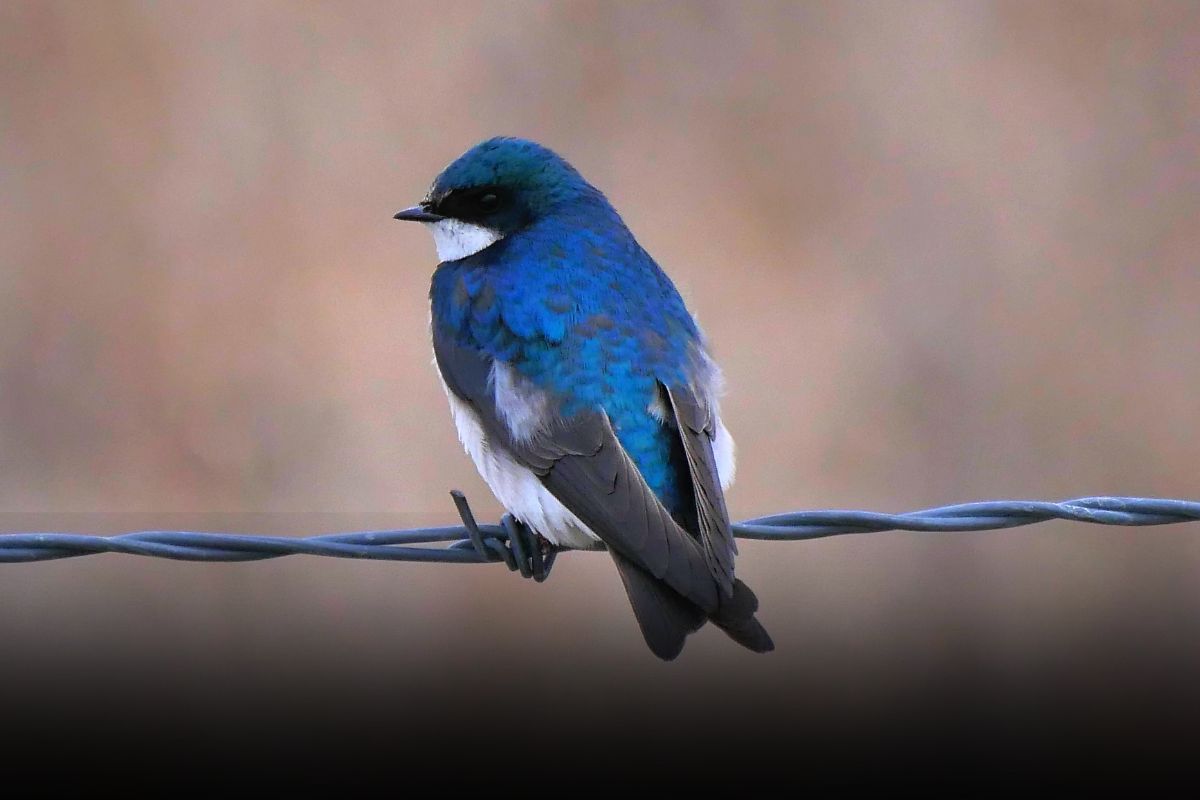
Where in Michigan does it find?
Tree Swallows can be found all across Michigan near bodies of water like lakes, marshes, or coastal areas.
Short Description
With metallic blue-green feathers on top and white underneath this bird looks stunning flying through the air!
Where should we look for them?
Locate Tree Swallows perched on branches near water or during the breeding season you can see them swooping around catching insects mid-flight.
Size/ Wingspan/ Weight
These birds are approximately 4.7 to 5.9 inches (12 to 15 centimeters) in length and have an 11.8 to 13.8 inch (30 to 35 centimeter) wingspan. They weigh about 0.6 to 0.9 ounces (16 to 25 grams).
Diet
The primary diet of Tree Swallows includes insects like flies, beetles, dragonflies along mosquitoes.
How to Identify It?
Look out for their striking metallic blue-green feathering on top and white coloration underneath. Their agile flight patterns are also characteristic.
White-breasted Nuthatch
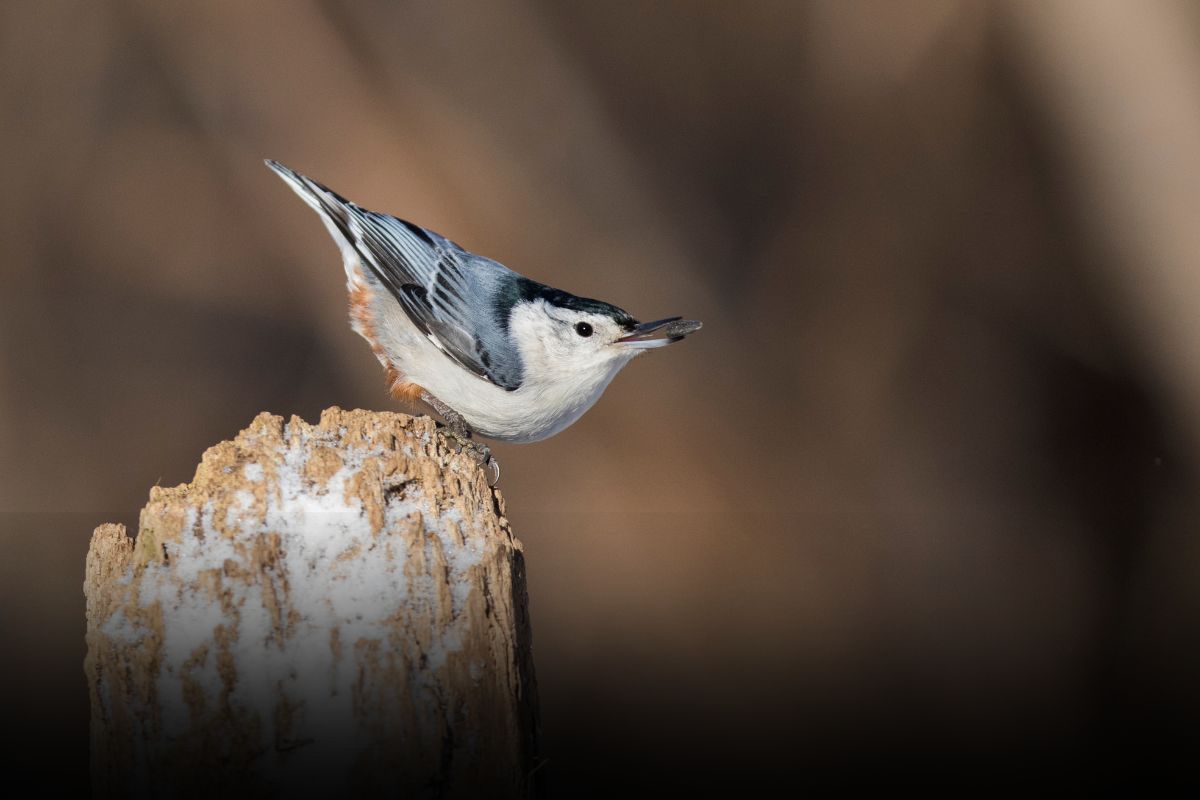
Where in Michigan does it find?
White-breasted Nuthatches can be found throughout Michigan, including forests, woodlands, and suburban areas with trees.
Short Description of the bird
The White-breasted Nuthatch is a small bird with bluish-gray feathers on its back and wings. It has a white chest and belly and a distinctive black cap on its head.
Where to find this bird?
Look for these birds climbing up or down tree trunks, searching for insects in crevices of bark. They are often seen on the sides of trees upside down.
Size of the bird, wingspan, weight
These birds measure about 5-6 inches long with a wingspan of approximately 9-10 inches. They weigh around (18–30 g) 0.7-1 ounce.
Diet
Their diet consists mainly of insects like beetles and caterpillars that they find by probing into tree bark. They also eat seeds from pine cones.
How to identify?
Look for their bluish-gray coloration on their back and wings contrasted against their white chest and belly. The black cap on their heads is also distinctive.
Yellow Warbler
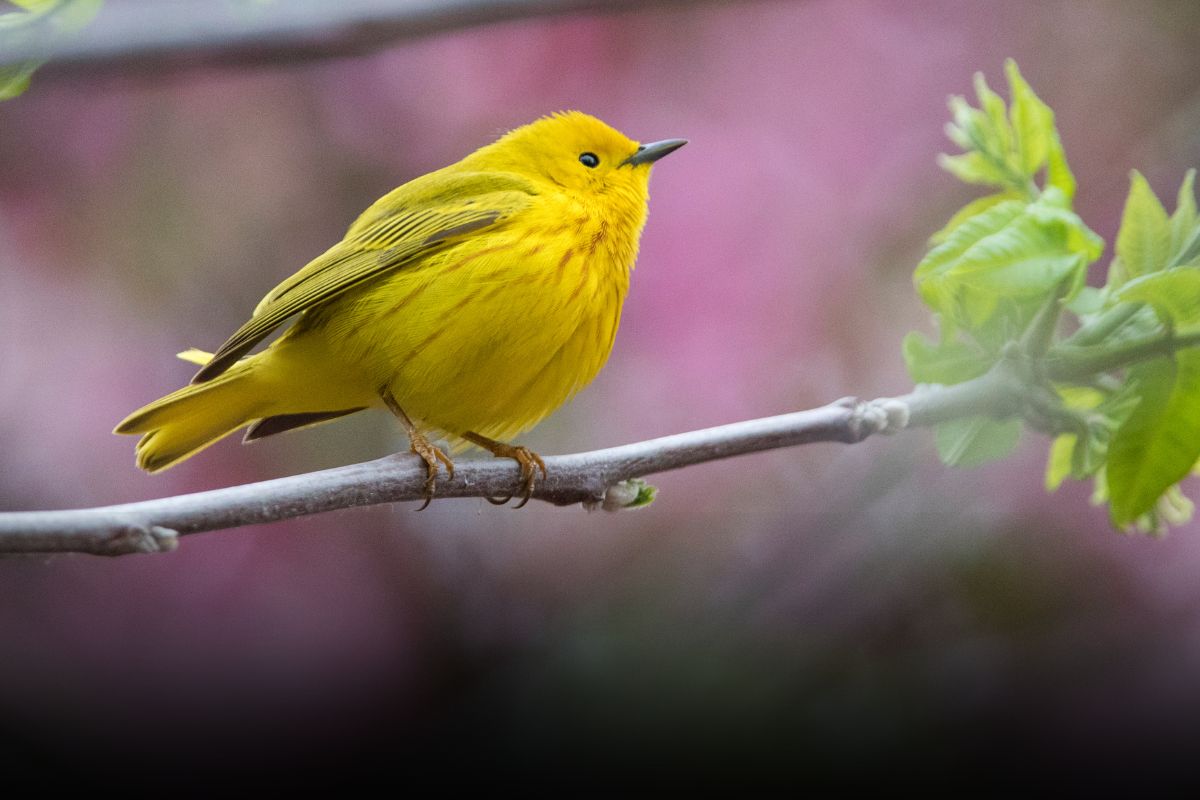
Where in Michigan does it find?
Yellow Warblers breed throughout Michigan during the summer months before migrating southward.
Short Description
As the name suggests Yellow Warblers sport bright yellow plumage or males have reddish streaks; females however appear duller apparently valuing camouflage higher priority than dazzling colors.
Where should we look for them?
Spot them flitting expertly through treetops shrubs along water’s edge lakes marshes swamps brushy fields.
Size/ Wingspan/ Weight
Yellow warblers are around 5 inches (12.7 centimeters) long and have a wingspan of 6.5-to-8 inches (16-to-20 centimeters). They weigh between 9 and 11 grams or less than half an ounce.
Diet
Yellow Warblers have diverse diets mainly consisting of insects like ants, caterpillars, beetles, flies, spiders enjoy occasional berry fruity snacks.
How to identify?
Look out for their bright yellow plumage (males) or duller coloration with reddish streaks (females). Their energetic flying style is also characteristic.
These fifteen small birds of Michigan offer a variety of colors, patterns, and behaviors. From the vibrant yellow feathers of the American Goldfinch to the striking blue-green hue of the Tree Swallow, each bird holds its unique charm.
Whether you find them near water sources like marshes or lakeshores, in your backyard feeders, or perched on tree branches in woodlands and gardens, take a moment to appreciate these tiny creatures and their important roles within our ecosystems.
Keep your eyes open and your ears tuned for their melodic songs and fluttering wings as you explore the diverse landscapes of Michigan.



